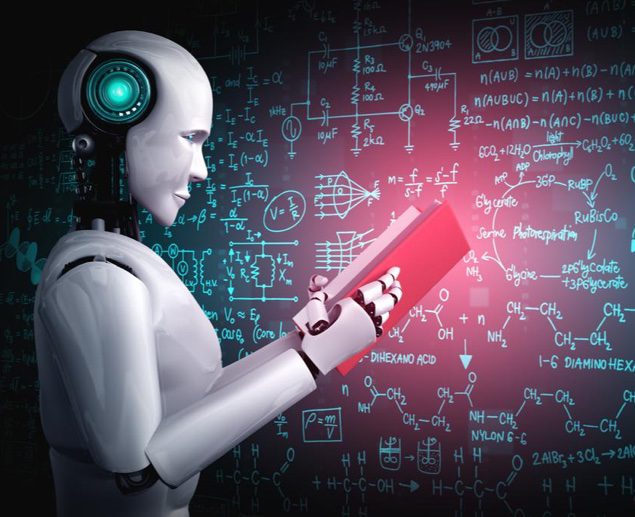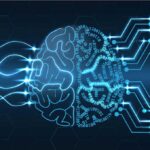Overview AI (AI) consists of a series of rich methods and disciplines, including vision, perception, speech and dialogue, decision-making and planning, problem solving, robotics, and other applications that can achieve self-learning. It is most appropriate to regard artificial intelligence as a set of technologies and techniques that complement traditional human attributes (such as intelligence, analytical …
Overview
AI (AI) consists of a series of rich methods and disciplines, including vision, perception, speech and dialogue, decision-making and planning, problem solving, robotics, and other applications that can achieve self-learning. It is most appropriate to regard artificial intelligence as a set of technologies and techniques that complement traditional human attributes (such as intelligence, analytical skills, and other abilities).
Artificial intelligence has the potential to promote the achievement of all the United Nations Sustainable development goals and promote sustainable development and economic development, but its use will also bring a wide range of social, economic and ethical issues. Therefore, many governments and organizations are preparing to widely adopt and use these technologies. The development of artificial intelligence is closely related to data policy, including data protection and privacy legislation.
Research laboratories, company boards of directors, and industries (robotics and communication networks), as well as consumers using artificial intelligence, are making noteworthy breakthroughs. The degree of impact of artificial intelligence on different countries and regions will depend on their economic structure and the degree of digitization of major industries, such as health, agriculture, and manufacturing.
The International Telecommunication Union has participated in a series of work on how artificial intelligence affects telecommunications and radio communication networks and the broader information and communication technology (ICT) environment.
In order to promote the innovation and credible use of artificial intelligence technology, there must be a strong and favorable environment. Policies must be formulated taking into account the needs of specific user groups to avoid discrimination and ensure that everyone can experience the benefits of artificial intelligence (including poorer communities, children, people with disabilities, and aborigines).
What is artificial intelligence?
AI (AI) includes a series of very different technologies, which can be widely defined and classified as “self-learning and adaptive systems. “There are many ways to define artificial intelligence:
From the perspective of technology, techniques, and/or methods (e.g., neural network methods for machine translation);
From the perspective of purpose (facial recognition, image recognition).
From a functional point of view (for example, according to the Cambridge Dictionary, the ability to understand language, recognize pictures, solve problems, and learn).
From the perspective of an agent or machine or algorithm (e.g., a robot, an autonomous vehicle).
Artificial intelligence is composed of a series of rich methods and disciplines, including vision, perception, speech and dialogue, decision-making and planning, problem solving, robotics and other applications that can achieve self-learning.It is most appropriate to regard artificial intelligence as a set of technologies and techniques that complement traditional human attributes (such as intelligence, analytical skills, and other abilities).The latest advances in computer processing, capabilities, and speed have greatly promoted the development of artificial intelligence, machine learning (ML), and modern data technology, and the progress of artificial intelligence in turn depends on the progress of data technology.
Opportunity
Artificial intelligence provides many industries with the advantages of new and innovative services, as well as the potential to expand scale, speed and accuracy. Artificial intelligence expands many of these advantages and combines them with insights from statistics and big data. On the basis of trend analysis, artificial intelligence helps business and policy models and regulatory methods change from descriptive analysis and trend forecasting to more sensitive proactive forecasting and evidence-based models and methods.
For example, artificial intelligence is being used to discover patterns of health vulnerabilities and insurance risks.
The use of artificial intelligence tools and technologies is bringing new opportunities to many different fields. Artificial intelligence and other algorithms are widely used in online search, entertainment, social media, autonomous vehicles, visual recognition, translation tools, smart assistants/speakers, voice-to-text, and many other applications.
Challenge
The artificial intelligence policy and regulatory framework are still in the preliminary stage of formation. The main policy issues that exist involve:
The use, accuracy, and methods of artificial intelligence tools (including human-related tools), including the formation of biases in machine learning models and the data used to train these models;
Responsibilities and obligations in the use of artificial intelligence models;
Purpose of use; and
The data set used to train them, and the method of collecting (or “obtaining”) data.
The main problem lies in the quality and representativeness of the data sets used to train artificial intelligence. Although researchers are working to improve the accuracy of software tools and algorithms, they are also worried that they will amplify racial and socio-economic biases. For example, the new Crown pandemic has had a disproportionate impact on ethnic minorities in many countries, but predictive models based on artificial intelligence may not always include other related health differences, and therefore may not always be able to correctly assess the risks of each person or group.
Data ownership has become an important issue. To help each model maintain the legitimacy, accuracy, and validity of its prediction results, data must be continuously aggregated. Deep forgery (for example, convincing fake videos of high-profile people saying or doing something at the request of video creators) and other artificial intelligence-generated materials are increasing. In fact, deep forgery technology has been used to make misleading videos in mainstream media, as well as to make photos of celebrities who have long since passed away. Leaving aside the key ethical issues related to use and accuracy, who owns the copyright of these “new” works?
Artificial intelligence has extraordinary potential and can become a force that benefits mankind. However, there are still huge challenges:
1. Basic trust and model transparency: We often don’t know how deep learning models draw conclusions, and these models may be vague and difficult to understand, and they are not very transparent. Although researchers hope that artificial intelligence will make accurate predictions, depending on the purpose, some researchers may still prefer simple but interpretable artificial intelligence models instead of more accurate but obscure models. Some people are willing to “trust” machines with complex systems and difficult decisions, while others may fundamentally prefer to retain a certain degree of human participation.
2. Bias: Although artificial intelligence can be very useful, it may also inadvertently produce undesirable or inappropriate purposes or unexpected results. People are increasingly worried about racial, disability, and gender biases in artificial intelligence and machine learning algorithms, as well as their broader impact on society as a whole. The accuracy of an artificial intelligence machine learning model depends on the quality and quantity of data used to train the artificial intelligence model. In real life, data labeling is often poorly done. It is necessary to standardize the data set. The data is also often biased. Training courses on the ethical application of artificial intelligence need to be carried out, and not only for computer engineering students.
3. Data availability and ownership: Obtaining data is very difficult. It is necessary to determine under what circumstances data can be provided and to whom best practices for providing data, while respecting the ownership of data and a clear commitment to confidentiality of certain types of data.
4. Data privacy and security: Security vulnerabilities caused by cyber attacks can have terrible consequences. Technologies such as machine learning can reduce risks and enable artificial intelligence models to be trained on devices that store data locally without exchanging data. At the same time, privacy protection technology helps to ensure that personal data is protected.
5. Limited knowledge and skills: Artificial intelligence can solve many problems, but only a few experts know how to apply artificial intelligence in an ethical way. Many researchers point out that it is necessary to involve sociologists and decision makers in the discussion, rather than assuming that artificial intelligence designed by a few “technical experts”, computer engineers, and data scientists will be used ethically. Education is the key to learning to use artificial intelligence responsibly.
6. Fair use of artificial intelligence: Artificial intelligence research is a computationally intensive work. Unequal access to computing power and data has deepened the gap between the few companies and elite universities with resources and other groups of people in the world who do not have resources.
The potential of artificial intelligence to benefit mankind
Artificial intelligence has many important applications that can help accelerate the achievement of the United Nations Sustainable Development Goals (Sustainable Development).In many areas that are important to the Sustainable Development Goals, artificial intelligence makes new services possible, such as:
In the field of healthcare related to SDG3, artificial intelligence is used to help provide remote health checks and follow-up tools. Artificial intelligence can analyze large amounts of data, gather insights from a large number of patient groups, and improve diagnosis and predictive analysis. Artificial intelligence has been successfully used to diagnose models of the new crown through lung scans and imaging, or to distinguish coughs caused by the new crown from other types of coughs. Artificial intelligence and big data have the potential to improve the medical system, optimize the hospital’s workflow, provide more accurate diagnosis, optimize clinical decision-making, and provide better treatment and higher-quality care at a lower cost.






